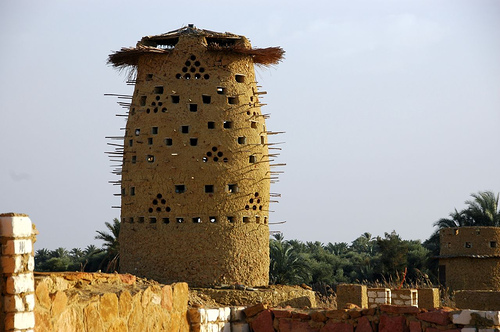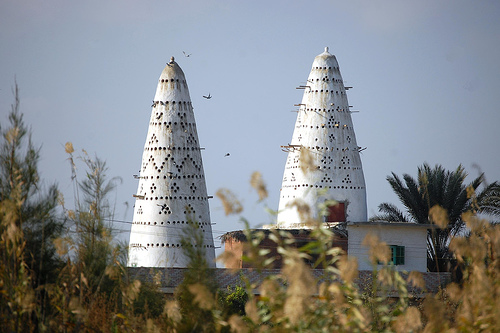“…an engaging new book….a lesson in how one of the world’s oldest and most popular building processes can be renewed in a high-tech age, lending its ancient beauty to architectural works of contemporary imagination.”—The Globe and Mail
Radiolaria Pavilion
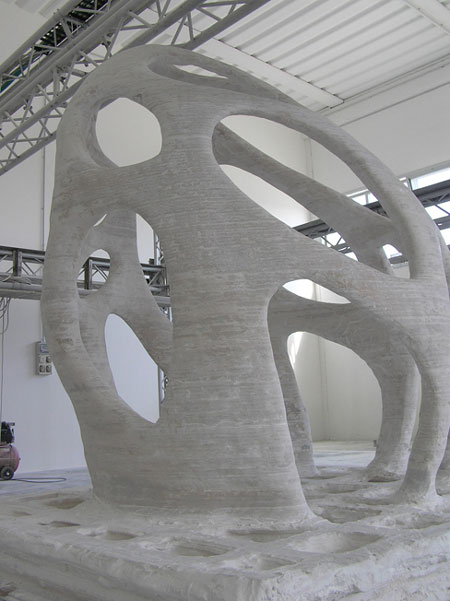
Andrea Morgante, founder of Shiro Studio, has collaborated with D-Shape to produce the Radiolaria pavilion, a complex, free-form structure produced using the world’s largest 3D printer. Measuring 3 x 3 x 3 metres, the structure is a scale model of a final 10-metre tall pavilion to be built in Pontedera, Italy, in 2010. D-Shape developed the first large-scale stereolithic printer in 2008 aiming to offer architects the design freedom that rapid prototyping allows them but has so far been confined to scale models. When D-Shape commissioned Andrea Morgante the design for the first large-scale structure to be printed the ultimate aim was to produce a geometry that could be self-supporting and demonstrate the capabilities of this innovative technology: being made of artificial sand-stone material and without any internal steel reinforcement the pavilion’s design and execution had to be intrinsically resilient to several static stresses.
The printing process takes place in a continuous work session: during the printing of each section a ‘structural ink’ is deposited by the printer’s nozzles on the sand. The solidification process takes 24 hours to complete. The new material (inorganic binder + sand or mineral dust) has been subjected to traction, compression and bending tests. The results have been extraordinary and the artificial sandstone features excellent resistance properties. Effectively this process returns any type of sand or mineral dust back to its original compact stone state. The binder transforms any kind of sand or marble dust into a stone-like material (i.e. a mineral with microcrystalline characteristics) with a resistance and traction superior to portland cement, to a point where there is no need to use iron to reinforce the structure. This artificial stone is chemically one hundred percent environmentally friendly.
Redding Residence
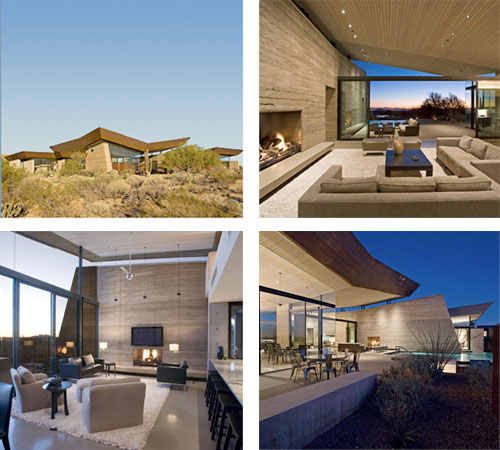
The Redding Residence, designed by Kendle Design Collaborative, is an 8,300-square-foot home located in a gated Scottsdale, Arizona community. The house has won the prestigious Golden Nugget award for custom homes from the Pacific Coast Builders Conference and was featured on the Arizona AIA tour of homes this spring.
Más es Menos: Construir en Barro—Una Arquitectura de Futuro
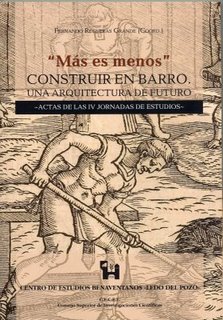
“Más es menos”. Construir en barro. Una arquitectura de futuro, que se edita con la colaboración del Ayuntamiento de Benavente y la Obra social de Caja España, consta de 192 páginas con abundancia de ilustraciones a color. En el índice figuran los títulos de las diez conferencias pronunciadas por los expertos invitados (antropólogos, historiadores, arquitectos y promotores), precedidos de una presentación a cargo del coordinador, en la que se detalla el desarrollo de las jornadas.
Earth Architecture Ranked 20th Most Popular Architecture Blog on Earth
The blog Eikongraphia has recently announced its annual ranking of architecture blogs. This year Earth Architecture debuts at #20. Thank you to everyone who stops by to read about architecture made of earth. I know that this information would not be disseminated without the support of the people who curate blogs much higher in the list such as BLDG BLOG, Archidose, Subtopia, and a few that are top blogs on my own ranking like Archinect and HTC Experiments.
Architektur der Dogon
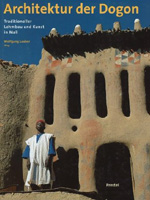
The popular blog, A Daily Dose of Architecture, is selling the rare, out-of-print title (text in German), Architektur der Dogon, by Wolfgang Lauber. The book presents the traditional earth architecture of the Dogon in Mali. Studied drawings of Dogon habitats accompany the abundant photographs of the architecture and artifacts. While the book may seem expensive ($300), it is much less than the Amazon.com price of $458.24.
Red Earth
Experimental Historian, friend and colleague, David Gissen, discusses Earth Architecture and makes an argument for red earth. He writes:
“In arguing for a red earth, I’m not arguing that earth holds an innate leftist proletarian politics in its chemical composition, nor am I completely arguing for the social construction of earth. I am arguing that our engagement with earth offers the possibilities for new liberatory ways of understanding space, that remain tied to earth’s commonness.A powerful concept of red earth, tied to its ubiquity and free nature, might be found in the roots of much red thought — Marx himself. In his Critique of German Ideology, Marx understood earth (as concept and thing) as the base of political economic philosophy. In one of his most famous passages, he wrote “In total contrast to German [idealist] philosophy, which descends from heaven to earth, we here ascend from earth to heaven.” Marx saw earth (both soil and “the earth”) as the base of his philosophy because it was the defacto element that contained the material and ideological possibilities of society (its nourishment, production, and metaphysics). For Marx, earth contains the conditions of society by society. Earth not only delivers the grains grown by a farmer, but when a person digs his shovel into earth to grow something he or she becomes “a farmer.” When a person binds the earth into bricks he or she becomes “a builder.” The earth is social matter and structure, how we engage with it repeats existing structures and opens up new concepts.”
Egyptian Pigeon Houses

Pigeon houses at Mit Gahmr, Egypt
Pigeon is a part of the daily diet in many parts of Egypt and Pigeon houses, or dovecotes, are constructed from mud brick create an artificial mountainous topography. The droppings are also a valuable source of fertilizer and the houses are so ubiquitous that they are also part of the Egyptian national identity. The dovecote typology can be found throughout the world and Earth Architecture has previously featured the palomares of Spain.

Interestingly, the Egyptian pigeon houses remind one of the recent work of architect Vicente Guallart, who in his project The Re-Naturalization of Territory, attempts to create what could be considered as dovecotes for biotechnology and cinema in Tarragona, Spain.
6ºATP / 9ºSIACOT
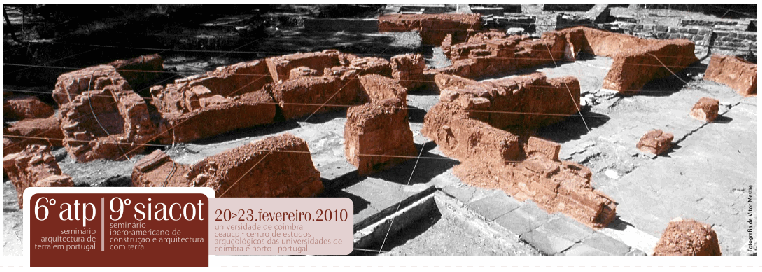
A Comissão de Organização do 6ºATP / 9ºSIACOT tem o prazer de informar
que se irá realizar em Coimbra, Portugal, de 20 a 23 de Fevereiro 2010, o
6º Seminário Arquitectura de Terra em Portugal &
9º Seminário Ibero-Americano de Construção e Arquitectura com Terra.
Convidam-se os interessados a enviar Resumo até dia 30 de Junho 2009.
Organização:
UC – Universidade de Coimbra
CEAUCP – Centro de Estudos Arqueológicos das Universidades de Coimbra e Porto
ESG – Escola Superior Gallaecia
FCO – Fundação Convento da Orada
CdT – Associação Centro da Terra
PROTERRA – Rede Ibero-Americana de Arquitectura e Construção com Terra.
Idiomas da Conferência:
Português, Espanhol, Inglês (sem tradução simultânea)
Temas dos Painéis:
1. Arqueologia, Arte e Antropologia
2. Património e Conservação
3. Técnicas, Construção, Investigação e Desenvolvimento
4. Arquitectura Vernácula e Contemporânea
Junto segue programa detalhado.
Para mais informações, consultar o site.
Agradece-se a divulgação do evento.
Comissão Organizadora
Maria Conceição Lopes, UC e CEAUCP
Maria Fernandes, CEAUCP, CdT, PROTERRA
Mariana Correia, ESG, FCO, CdT, PROTERRA
Teresa Beirão, CdT
Luís Fernando Guerrero Baca, PROTERRA
Informações e Envio de Resumos:
6ºATP / 9ºSIACOT
E-mail:
6atp@gmail.com (geral)
info@centrodaterra.org (oficina)
Site:
www.esgallaecia.com/6atp
www.uc.pt/uid/cea/6atp
Local: Universidade de Coimbra, CEAUCP
Endereço: Instituto de Arqueologia, Palácio Sub-Ripas, 3000-395 Coimbra, PORTUGAL
Tel. (+351) 239 851603 (C/ Maria Fernandes ou Conceição Lopes)
Fax (+351) 239 851609 (C/ Maria Fernandes ou Conceição Lopes)
EngD Studentship in Mud Brick
In collaboration with Ramboll UK, the Department of Civil, Environmental & Geomatic Engineering at the University College London has funding from the Engineering and Physical Sciences Research Council for an EngD studentship (4 year programme) for the following project: INNOVATIVE CONCEPTS FOR SEISMICALLY RESISTANT MUD BRICK CONSTRUCTION. Click here to download the project description.

